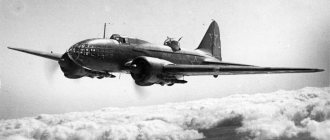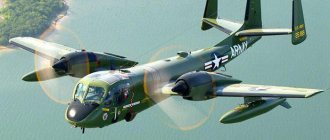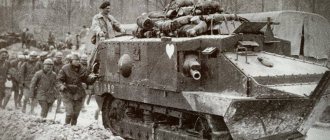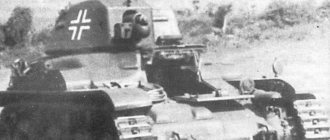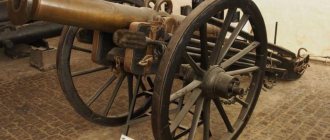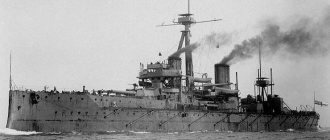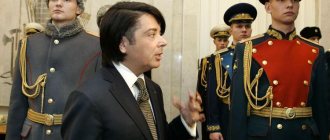On a starvation diet
The mare of the famous Gascon was a very sad sight - just like the Air Force of the French Republic in the late 30s of the last century.
France ended the First World War with one of the most powerful air forces in the world. But when the guns fell silent and amid an economic downturn, French pilots quickly learned that their most dangerous enemy in peacetime was their own generals. And winning the battle for a meager budget in a depression is more difficult than fighting Richthofen’s “air circus”
Evgeny Bashin-Razumovsky Historical expert
Manfred von Richthofen, better known as the “Red Baron,” was a German fighter pilot and the best ace of the First World War. The planes of his squadron wore bright colors to make it easier to recognize their own in the air, and the pilots lived in tents near the front line and often “roamed” from place to place. For this, the squadron received the nickname "air circus".
The arguments of the “ground” generals were compelling - the last war clearly showed the role of artillery, which in some places completely changed the landscape in the north-east of France. The canvas airplanes flying in the skies did not look very convincing against the backdrop of huge shell craters. Therefore, in the concept adopted after the war in France, the main task of aviation was... adjusting artillery fire.
With this approach, it was difficult to “knock out” money to update the aircraft fleet.
By the end of 1932, a significant part of the Armee de l'Air ("Air Army" is the official name of the French Air Force. - Ed.) was made up of squadrons of spotters and reconnaissance aircraft. From a technical point of view, these were wooden-canvas biplanes, which, at the sight of some Soviet TB-3 heavy bomber, acquired the color of a ripe tomato without any paint. Perhaps this vegetation would have continued further, but then Hitler came to power “in one of the neighboring countries,” and the newly formed Ministry of Aviation asked for three to four billion francs for new aircraft.
Nieuport-Delage fighter NiD.62
Modern modifications
At the moment, only 165 Rafales have been produced, and, as is required for a multi-purpose military aircraft, they differ quite greatly in “specialization”, since more than ten modifications of this formidable aircraft have been developed. However, apart from the models modified specifically for the Indian and Egyptian Air Forces (index “BM” and “DM” for the Egyptians and types “BH”, “DH” for the Indians), the main types of Dassault Rafale today are:
- single-seat, types “D” and “M” (land-based and sea-based, respectively);
- modification for naval forces of the Standard F2 type (in service since 2006);
- carrier-based double, with index N;
- aircraft for using nuclear missiles, with the index BM.
The first Shkvals also fall into this classification, but Rafale types “A” and “B” are no longer produced, and the Rafale C variant, erroneously mentioned on most sites, has long been renamed Rafale D.
Swan, crayfish and pike...
With difficulty, but the money seemed to be found. And still, the pace of delivery of cars, to put it mildly, was not encouraging. Moreover, the ground generals continued to whine “we need scouts,” the pilots wanted to fly and bomb, and the industrialists did not have time to add zeros to the price tags. Having read about the then newfangled “Douay Doctrine,” the French generals took rulers, measured the distance to targets in Germany from the airfields of France and the Eastern European allies and decided that they could do without a strategic bomber. Two motors are enough. Let the plane fly and reconnaissance for these infantry “boots”, but if necessary, it will bomb a little. This is how the requirements for the BRC aircraft were born (Bombardemenl, Chasse, Reconnaissance - “bomber, fighter, reconnaissance”).
While aviation engineers scratched their heads in puzzlement and drank absinthe, the situation in old Europe continued to heat up. In 1936, the Germans sent troops into the Rhineland demilitarized zone.
The proud Gauls got excited... but swallowed it.
Firstly, the war was supposed to cost 30 million francs a day, and the French economy was already in a pre-infarction state. Secondly, the question “what will we fight with” was extremely interesting. The Air Force in the first line had 40 Amio 143, 97 Bloch MB.200 and 64 Pote 54. All these creations of the BRC concept (or “air cruisers” in the Soviet aviation terminology of those years), as the practice of the war in Spain showed, worked frankly poorly - they bombed somehow, fought off fighters even worse and only if they got their hands on them. It was somehow scary to scare the Fuhrer with such an “armada”. Moreover, intelligence warned that he might not be afraid.
Amio 143 bombers. Angular, with machine-gun turrets and fixed landing gear, the French aircraft of the early 30s were called “crimes against aerodynamics”
French parliamentarians unanimously said “oops” and adopted a new plan for the next five-year period. According to it, Armee de l'Air was supposed to grow in size by about a dozen and be completely re-equipped with new machines... by 1941.
A footprint in the skies of military history and computer games
Taking into account the results of the “Indian tender”, as well as the fact that of the ultra-modern multi-purpose military vehicles presented on it, only the Rafale took part in real military operations, we can say that this fourth-generation French fighter has already forever entered the history of aircraft manufacturing and military affairs .
It was on the basis of the Rafale that similar aircraft were built in Japan, India, China and Taiwan. True, in the Indian (code designation “Diamond”) and Taiwanese (Jingguo) versions, this unique device has lost its multi-purpose meaning and is produced exclusively as a fighter.
Particularly interesting is the joint project of China and Pakistan “Chengdu FC-1 Xiaolong” (Chengdu FC-1 Xiaolong), in the Pakistani classification - JF-17 Thunder.
Chinese and Pakistani aircraft designers have managed to successfully combine the advantages of Dassault Rafale and new developments based on Chinese modifications of the MiG-21!
The popularity of the multi-purpose Shkval is also proven by the fact that since 1997, aircraft of Rafale modifications have been constantly present in one of the most popular foreign computer flight simulators - Jane's Fighters Anthology.
Socialism in a single industry
Alas, having started handing out orders for new aircraft in batches, the French military “suddenly” realized that simply waving a bag of francs does not always give the desired effect.
Firms, having received a small piece of the state pie, began small-scale production under the slogan “knuckle down, yes!”
Unfortunately for aircraft manufacturers, France at that time was ruled by the government of socialist Leon Blum. Aviation Minister Pierre, although he bore the last name Kot, solved problems rather in the spirit of Bulgakov’s Sharikov - by asking the government for a mandate to nationalize most of the industry.
A significant part of aircraft factories were united into state-controlled corporations. It was a little less successful to herd engine builders into a bunch. In addition to reforming the management system, Kot also started perestroika - that is, the transfer of industrial capacities from the north of the country and the outskirts of the capital to the south, away from the Luftwaffe. Naturally, this did not cause much enthusiasm; even the workers who sympathized with the socialists did not really want to go from brilliant Paris to some wretched Siberian Marseille. As a result, at first the rate of aircraft production fell even compared to the pre-reform period.
Fighter-bomber design
Rafale belongs to the class of single-fin aircraft, both engines are located at the rear. Made according to the “duck” or “tailless” aerodynamic model that had proven itself well on the Mirages. When creating Shkval, the military demanded two main things from the manufacturing company:
- the aircraft must be lighter than the common European one;
- be less noticeable to enemy radars.
The engineers from Dassault Aviation managed to achieve an elegant solution to the problems assigned to them when they decided to use three main materials for the body of the aircraft and its wings:
- titanium;
- aluminum-lithium alloys;
- Kevlar;
- carbon fiber;
- composites.
More than 20% of the parts (by weight more than 25%) of this aircraft are made of composites and carbon fiber. The result was not a mindless copying of American stealth technologies, but an elegant, purely European solution with impressive overall performance characteristics:
- wing area - 46 sq. m.;
- wingspan - only 11 m (which is significantly less than the same figure for MiGs or American multi-role fighters);
- length ─ 15.3 m;
- weight (empty plane) ─ 9 tons (sea, with the M index exactly 500 kg heavier);
- weight (maximum take-off) ─ 21.5 tons;
- height ─ 5.3 meters.
At the same time, the vehicle is capable of reaching speeds of up to 2 thousand km/h, rising to a practical height of more than 15 thousand meters and is technically capable of withstanding overloads of up to 9 g. Thus, the new multi-purpose vehicle is capable of performing supersonic flights and maneuvers at speeds of more than 1.4 M or over 1,700 km/h. The aircraft is equipped with a front horizontal tail for greater maneuverability during sharp turns in dogfights or avoiding anti-aircraft shells or air-to-air missiles.
The creators also provided space for spare fuel tanks, both suspended (PTB) and conformal (CTB). In the case of supersonic flight, external fuel tanks are provided with smaller volumes than for long-distance operations (1250 and 2000 liters, respectively).
An interesting feature of the aircraft was the location of the parabolic antennas of aviation radars: on interceptors they are installed mainly in the front, while fighters have more of them in the stern. On the Rafale, these schemes are successfully combined (later becoming common for multi-purpose projects of the fourth and “4+” generations).
Moreover, the radars of the French fighter have been equipped since 2012 with phased antenna arrays (PAA), both passive and active (AFAR), which increases its survivability.
In addition to traditional radar equipment, the aircraft is equipped with such an interesting system as SPECTRa, developed specifically for it. The name of this latest development stands for “Rafale Threat Protection and Prevention System.”
It includes a system of infrared sensors that warn of radar and laser radiation from a fighter. And even equipment capable of suppressing enemy electronic warfare equipment and laser illumination.
There are many of them, but we are alone
Since it was not yet possible to scare the Germans with numbers, the French decided to try differently. Two seats were hastily stuck into the bomb bay of the Amio 340 twin-engine bomber being tested so that the Chief of Staff of the French Air Force, General Joseph Vullemin, could go on a visit to Germany. Alas, Goebbels’ department has already become adept at throwing dust in the eyes and hanging noodles on the ears much better than the Franks. The general was shown a bunch of formidable and supposedly mass-produced vehicles - for example, the Heinkel He.100.
Anton Zheleznyak Technical and engineering expert
Heinkel He.100 is an experimental German fighter. A total of 25 examples were built between 1937-39. In March and April 1939, it set two consecutive world speed records. The aircraft was not accepted for service, but was widely used in propaganda - it was demonstrated to the press under the guise of a serial one, supplied in large quantities to the Luftwaffe. From show to show, different squadron numbers and emblems were painted on the vehicle to create the appearance of their large number.
And for dessert - a huge workshop, from the gates of which ready-made Bf.110 Messerschmitts were constantly rolling out like hot cakes, which immediately scattered among the combat units. In reality, it was a painting shop, where five Messers were brought in tow to repaint the license plates and camouflage. However, even if the general didn’t believe his eyes, intelligence reports were waiting for him at home that the Germans had already switched to working in two shifts and were producing a thousand aircraft every month. Knowing that the entire French industry in 1938 was producing approximately 50 aircraft per month, Vullemin sadly told politicians at the height of the Sudetenland crisis: “In the event of a conflict with Germany over Czechoslovakia, the French Air Force will be on the brink of an abyss and will be destroyed in less than two weeks.” "
Evgeny Bashin-Razumovsky Expert on historical issues
The Sudetenland Crisis was a 1938 conflict over the Sudetenland, a border region of Czechoslovakia populated predominantly by ethnic Germans. At the end of September, following international negotiations in Munich (which, characteristically, took place without the participation of Czechoslovakia), the Sudetenland was transferred to Germany. The assessment of this event was ambiguous, and remains so to this day. Many historians consider the Munich Agreement to be the turning point that led to World War II.
In fact, everything was not horror-horror-horror, but simply horror - by September 1938, the French Air Force had a little more than a thousand aircraft, of which seven hundred were considered combat-ready, and about 50 were modern enough to compete with Heinkels and "Messerschmitts". An attempt by the frogs to oppose Goering’s “chicks,” many of whom had the Spanish experience of the Condor Legion, would clearly not end well.
Assembly of the Amio 340 bomber. He was a pleasant exception to the rule mentioned above

